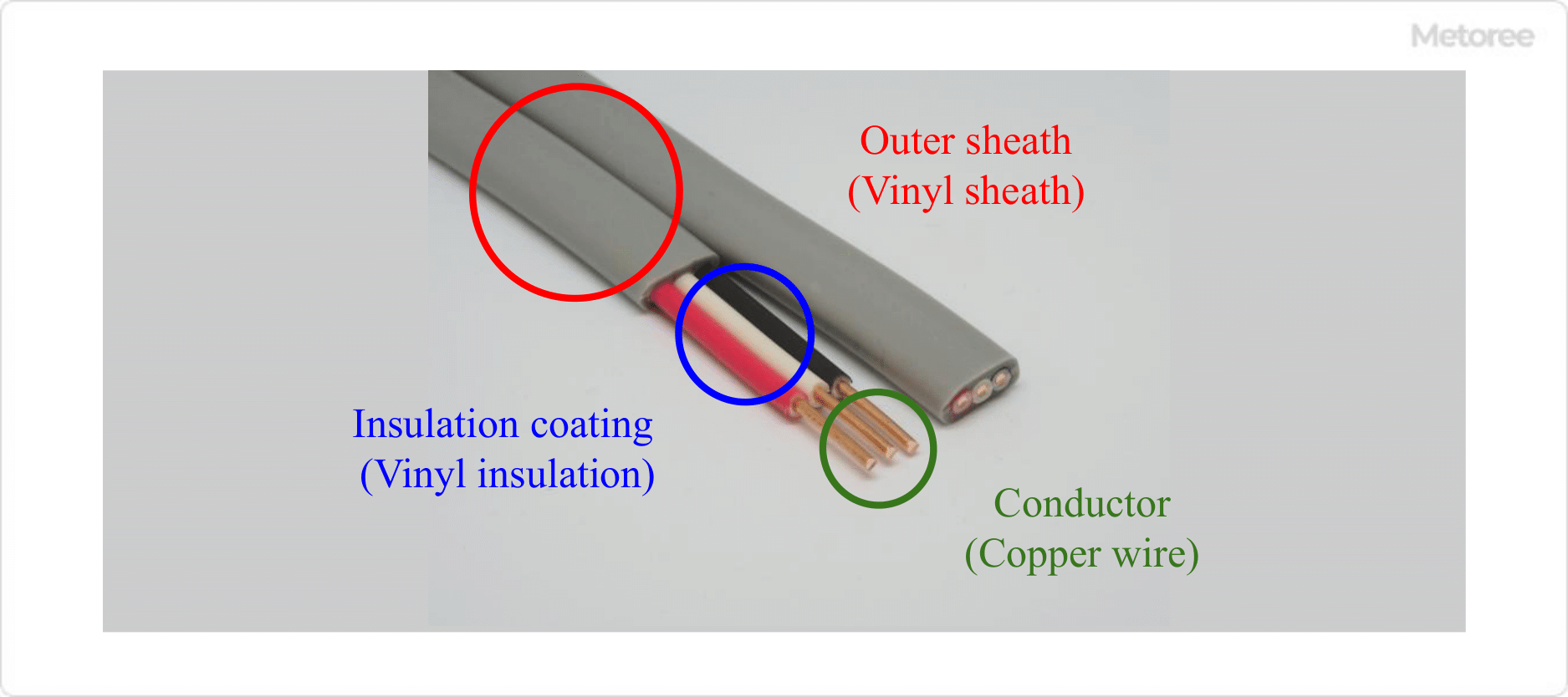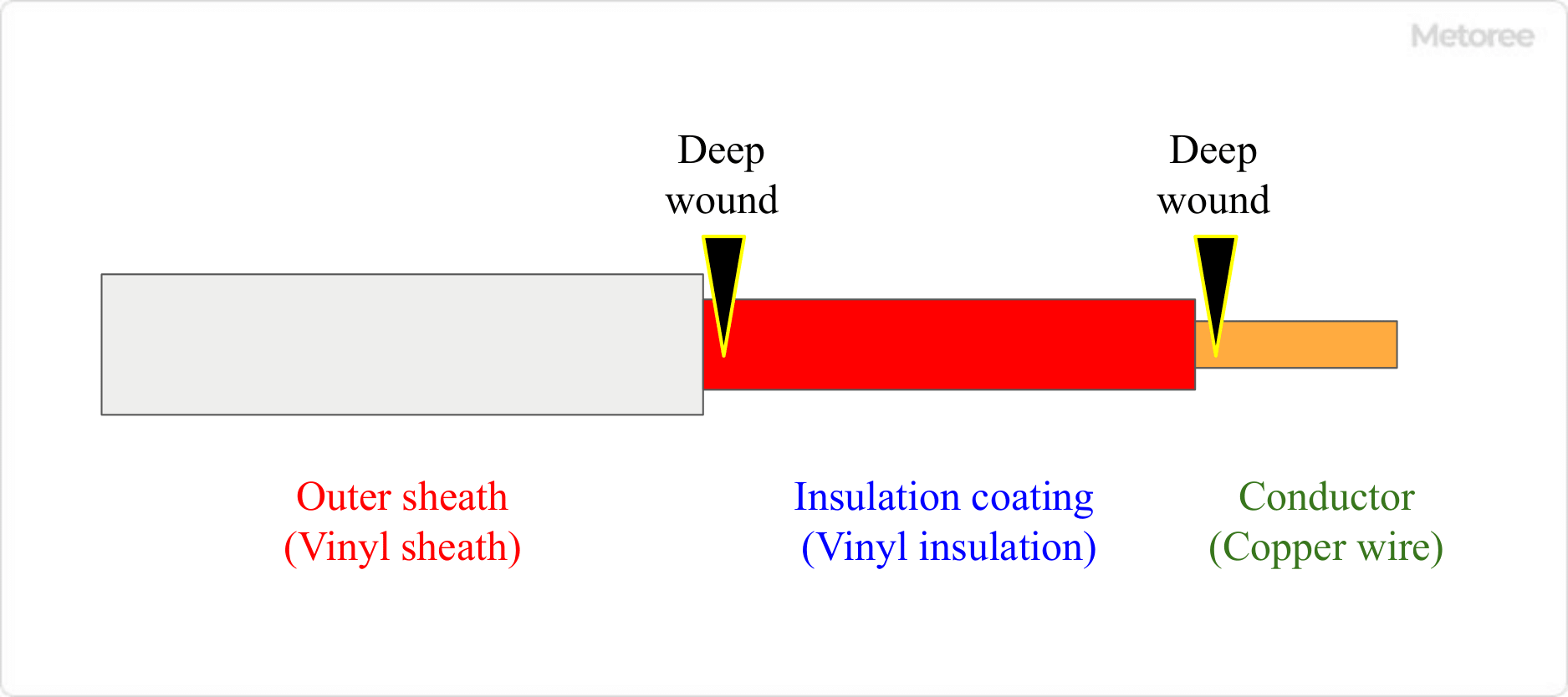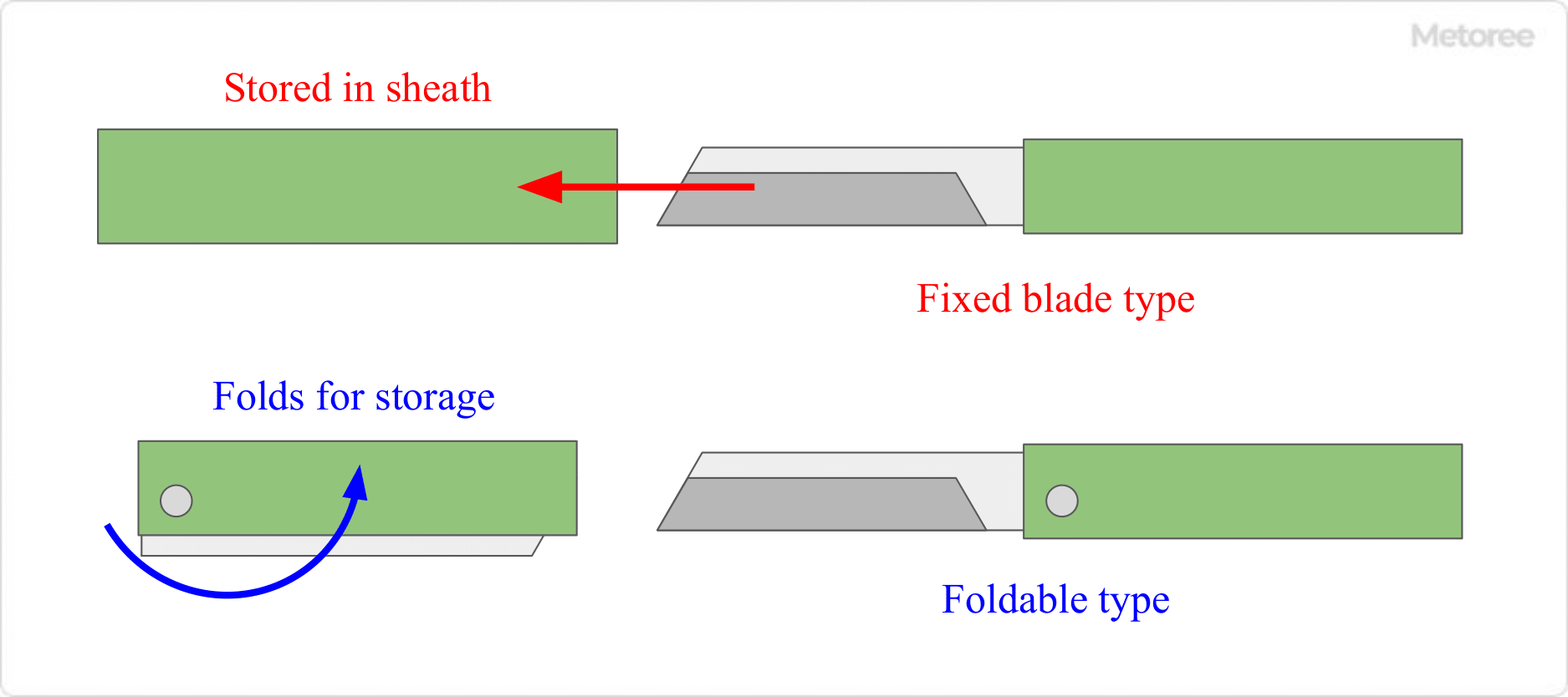What Is an Electrician’s Knife?
An electrician’s knife is a knife used primarily for processing cables for electrical work.
Some people use it for outdoor and DIY activities. Cable processing for electrical work can be done with a cutter knife or wire stripper.
However, it is difficult to process thick cables, etc., so electrician’s knives are indispensable in the field of electrical work.
Uses of Electrician’s Knives

Figure 1. VVF cable
The main use of electrician’s knives is for cutting and sheathing cables in electrical work. In electrical work, cables such as VVF (vinyl insulated vinyl sheathed cable, flat type) and CV (cross-linked polyethylene insulated vinyl sheathed cable) are often used.
In order to connect these cables to terminals, it is necessary to remove the insulation sheath (vinyl insulation or cross-linked polyethylene insulation) and outer sheath (vinyl sheath) to expose the inner conductor (copper wire). For this sheathing operation, electrician’s knives can process cables of any shape or thickness.
Principle of Electrician’s Knives

Figure 2. Deep cable wound
Compared to a cutter knife, the electrician’s knife has a thicker blade and a moderately dull cutting edge. If the blade is too sharp when peeling the cable sheath, the blade may go deep into areas that should not be damaged.
Deep scratches on the insulation sheath are dangerous because they may lead to electric shock or fire. In addition, if the conductor is deeply scratched, it is more likely to break, which may cause poor contact or wire breakage.
Electrician’s knives have a moderately dull cutting edge, making it easy to adjust the blade’s entry. Also, because the blade is thick, there is no risk of it breaking like a cutter knife even when force is applied.
Types of Electrician’s Knives
There are several types of electrician’s knives in terms of shape and material. There are also products with convenient additional functions.
1. Classification by Shape

Figure 3. Fixed blade and foldable type
There are two types of electrician’s knives: fixed-blade and folding.
Fixed Blade Type
The fixed blade type stores the blade in a sheath. After removing it from the sheath, you can put it to work right away. If you use an electrician’s knife frequently, the fixed blade type is more suitable.
In addition, the blade and grip are completely fixed in the fixed blade type, so the blade does not wobble when working. Since there are no moving parts, there is little risk of breakage.
Folding Type
In the folding type, the blade is folded into the grip section for storage. It is compact and portable. Folding type also has replaceable blades, which are more economical.
2. Classification by Blade Material
There are two types of electrician’s knife blades: stainless steel and steel.
Stainless Steel Blade
Stainless steel blades are hard, durable, and rust-resistant. If you use it infrequently, a stainless steel blade is suitable for you because it requires no maintenance.
Stainless steel blades are difficult to sharpen, so you will need to replace or repurchase blades when they lose their sharpness.
Steel Blade
Unlike stainless steel, steel blades, which are made of iron mixed with carbon, rust easily. However, because they are easy to sharpen, they are easy to maintain and can be used for a long time if well cared for. They also have a customizability that allows you to make the blade as sharp as you like.
3. Classification by Grip Material
There are three types of grips for electrician’s knives: rubber, plastic, and wood.
Rubber
Rubber grips are safer because they are non-slip. These grips are easy for anyone to use.
Plastic
Plastic grips are resistant to impact. They are also lightweight, so your arms will not get tired easily.
Wooden
Wooden grips absorb oil and moisture and become more comfortable in the hand as they are used.
4. Classification by Additional Functions
Electrician’s knives are simple in construction, but some products have useful additional functions. For example, some knives have holes for splitting and stripping VVF cables, and some have blades for removing burrs.
If you make use of them, you can improve the efficiency of your work. There are also those with a flat blade tip that can be used like a chisel.
Since it is a through-hole type, the end of the grip can be tapped with a hammer. This is useful, for example, when you want to drill a hole in the wall for an outlet.